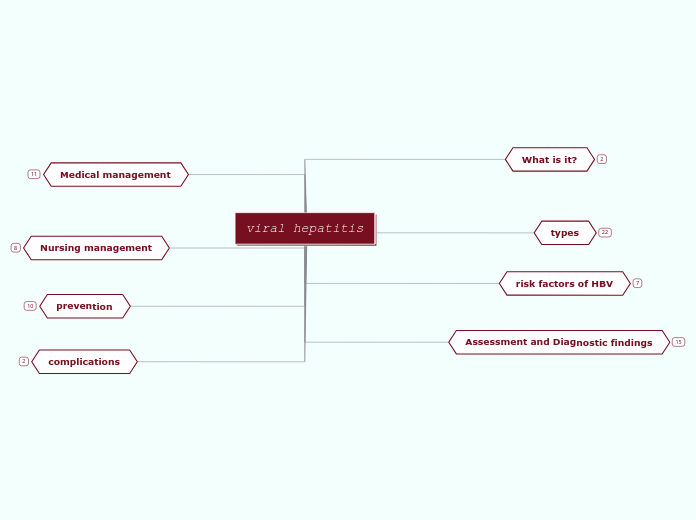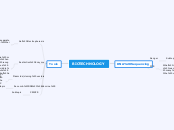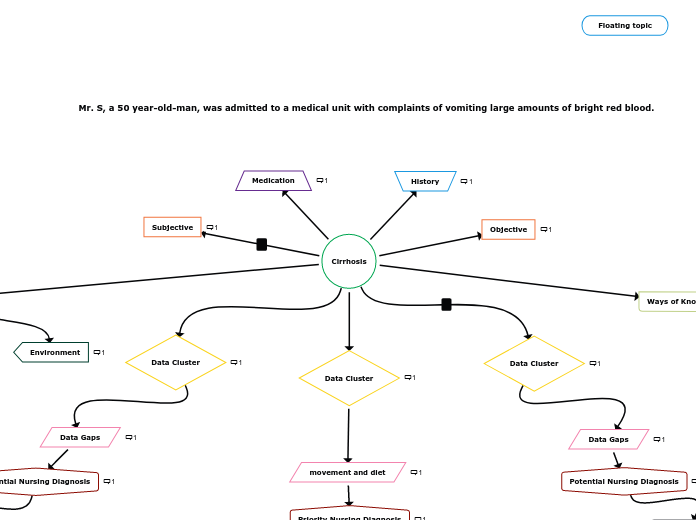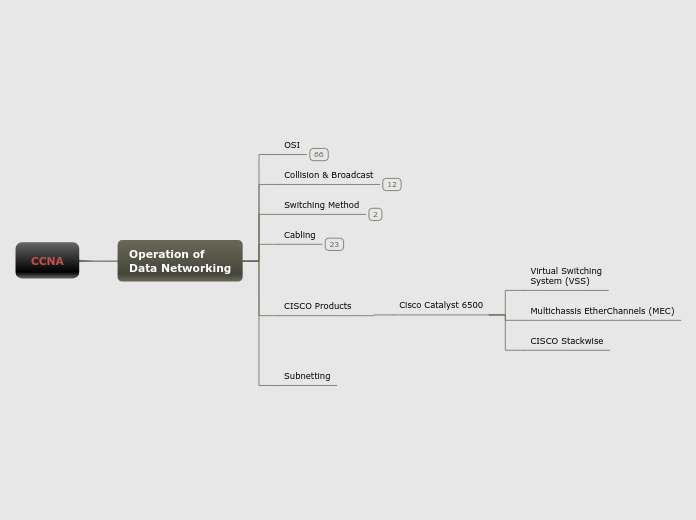viral hepatitis
complications
liver cancer.
cirrhosis
Assessment and Diagnostic findings
• Urine test
to assess for bile pigment
it indicates liver dysfunction
• Blood test
liver function test LFT
shows abnormal high levels of proteins, albumin, goblin, and indirect bilirubin, indicating inflammation of the liver and jaundice.
WBC
levels can be high. A sign for infection.
• abdominal ultrasound
to assess for enlarged liver
• polymerase chain reaction testing
used to detect the virus DNA
• Hepatitis profile
to assess the presence of hepatitis viruses antigens and antibodies such as
HBsAg—hepatitis B surface antigen
risk factors of HBV
• Travel to or residence in area with uncertain sanitary condition
• Tattooing
• Multiple sexual partners
• Mother-to-child transmission
• Health care workers
• IV/injection drug use
• Frequent exposure to blood, blood products, or other body fluids
prevention
Passive Immunization HBV:
Can be used as prophylactic post-exposure.
indicated for people exposed to HBV who have never had hepatitis B and have never received hepatitis B vaccine.
Hepatitis B immune globulin (HBIG):
Active Immunization HBV:
• given IM, 3 doses.
• A hepatitis B vaccine prepared from plasma of humans chronically infected with HBV
• A yeast-recombinant hepatitis B vaccine (Recombivax HB):
Preventing transmission by
• Continued screening of blood donors for the presence of hepatitis B antigen (HBAg)
• The use of disposable syringes, needles, and lancets
• Gloves are worn when handling all blood and body fluids
• In the clinical laboratory and the hemodialysis unit, work areas are disinfected daily.
Nursing management
• Follow up visits
• Educating about avoiding drinking alcohol.
• Explain to the intimate family and friends regarding the risk for contracting HBV
plans for them to receive hepatitis B vaccine or HBIG.
• Educating regarding adequate nutrition and rest
• Identification of psychosocial issues and concerns
regarding social isolation and separation from family and friends.
• Encourage gradual resumption of physical activity
Medical management
Adequate nutrition
Bed rest
may be recommended until the symptoms of hepatitis have subsided
Anti-viral agents
oral nucleotide analogs
entecavir (ETV) and tenofovir (TDF)
alpha-interferon
has significant side effects, including
fever, anorexia, nausea, fatigue, bone marrow suppression, alopecia, and bacterial infections
substances produced normally in the body to fight infections and tumors.
A regimen of 5m U daily or 10m U 3/weekly for 16 - 24 weeks results in remission of disease
types
• Hepatitis C
similar to hepatitis B but usually mild or absent
Blood transfusions, sharing of contaminated needles, and sexual contact
hepatitis C virus
• Hepatitis B
loss of appetite, dyspepsia, abdominal pain, generalized aching, malaise, and weakness. some patients have arthralgias and rashes.
percutaneous and permucosal routes such as blood, saliva, semen, and vaginal secretions
hepatitis B virus ( a DNA virus)
• Hepatitis A
signs and symptoms
mild, flu-like upper respiratory tract infection, with low-grade fever, anorexia, jaundice and dark urine
mode of transmission
faecal–oral route, by the ingestion of food or liquids infected with the virus
caused by
an RNA virus of the enterovirus family/ hepatitis A virus
called infectious hepatitis
What is it?
systemic, viral infection in which necrosis and inflammation of liver cells
produce a characteristic cluster of clinical, biochemical, and cellular changes









